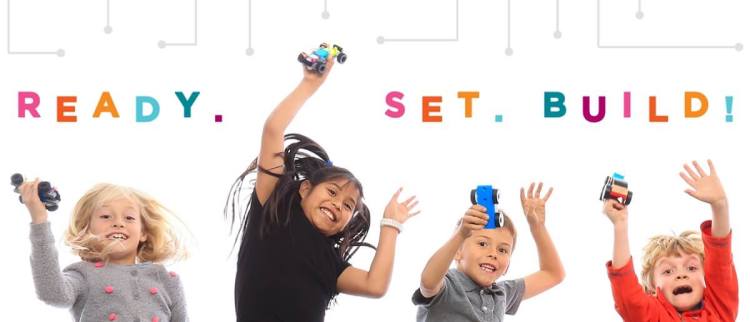Startup Tenka Labs is today revealing Circuit Cubes, a new way for kids to build their own smart LEGO-like toys. The company has also raised a $2.1 million round of funding to expand its efforts.
Circuit Cubes are electrically charged building blocks that can include such functions as a motor, light-emitting diode (LED) lighting, sound, sensors, and a battery. Kids can snap them together to create an endless number of multifunctional 3D objects, from motorized toy cars to flashlights.
Tenka Labs cofounders Nate MacDonald and John Schuster are longtime robotics educators who know kids learn better through hands-on construction and troubleshooting. They designed Circuit Cubes to help kids grasp the fundamentals of circuitry and science through unprescribed play — that doesn’t rely on apps or screens. The company is based in Sausalito, Calif. and was started in 2015.

Above: Circuit Cubes
Tenka Labs wants to bring toys to life to keep up with the growing expectations of children in the digital age. It also wants to spark their interest in science, math, electronics, and programming.
The first three cubes available for preorder today are the Motor Cube, Battery Cube, and LED Cube. They are available in three introductory kits: Whacky Wheels, Bright Lights, and Smart Art.
As a toy-agnostic power source that can make vintage toys smarter and bring LEGOs to life, Circuit Cubes offer the first tangible glimpse of the future of play.
The cubes magnetically snap together in any direction — horizontally, vertically, and diagonally — and add sound, movement, light, and sensors to any creation or LEGO project. They’re built from the ground up to work with LEGOs, as well as with such ordinary household items as milk cartons, swimming pool noodles, and beloved old toys.
Every cube is transparent so that kids can actually see the electronic components in action, and therefore quickly understand how circuits work.
“As teachers and parents, we know that lessons on engineering and circuitry need to be grounded in play to really spark kids’ interest and imagination,” said MacDonald, in a statement. “We love the idea of bringing toys into the classroom, but quickly noticed that most educational products today tend to overlook the importance of showing how to connect point A to point B. At the same time, some toys that aim to teach aren’t actually that fun to play with.”
Each set is available for $60. The sets come with wires, a variety of LEGO-style bricks, and other parts germane to each themed kit — such as wheels, hubs, and markers. They also include the three primary cubes.
“Our goal is to show kids exactly how a geared motor works or the difference between a serial and parallel connection without taking the fun out of it,” said Schuster, in a statement. “Kids need to be completely engaged first if they’re going to really absorb complex concepts on how things work. When kids are having fun, they’re at their maximum learning curve to develop the skills needed to start building and designing things, and to go on their own adventure.”
VentureBeat's mission is to be a digital town square for technical decision-makers to gain knowledge about transformative enterprise technology and transact. Learn More

